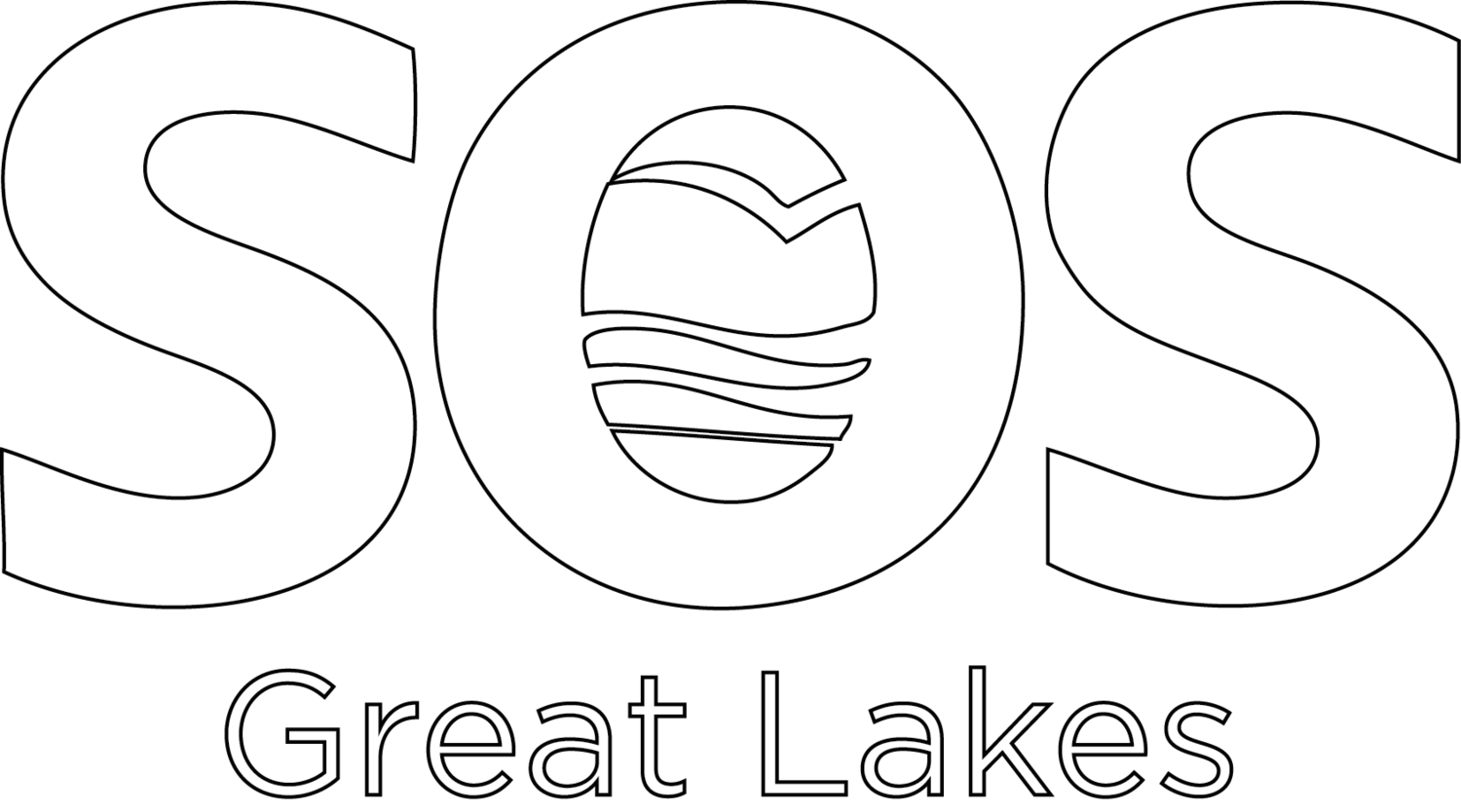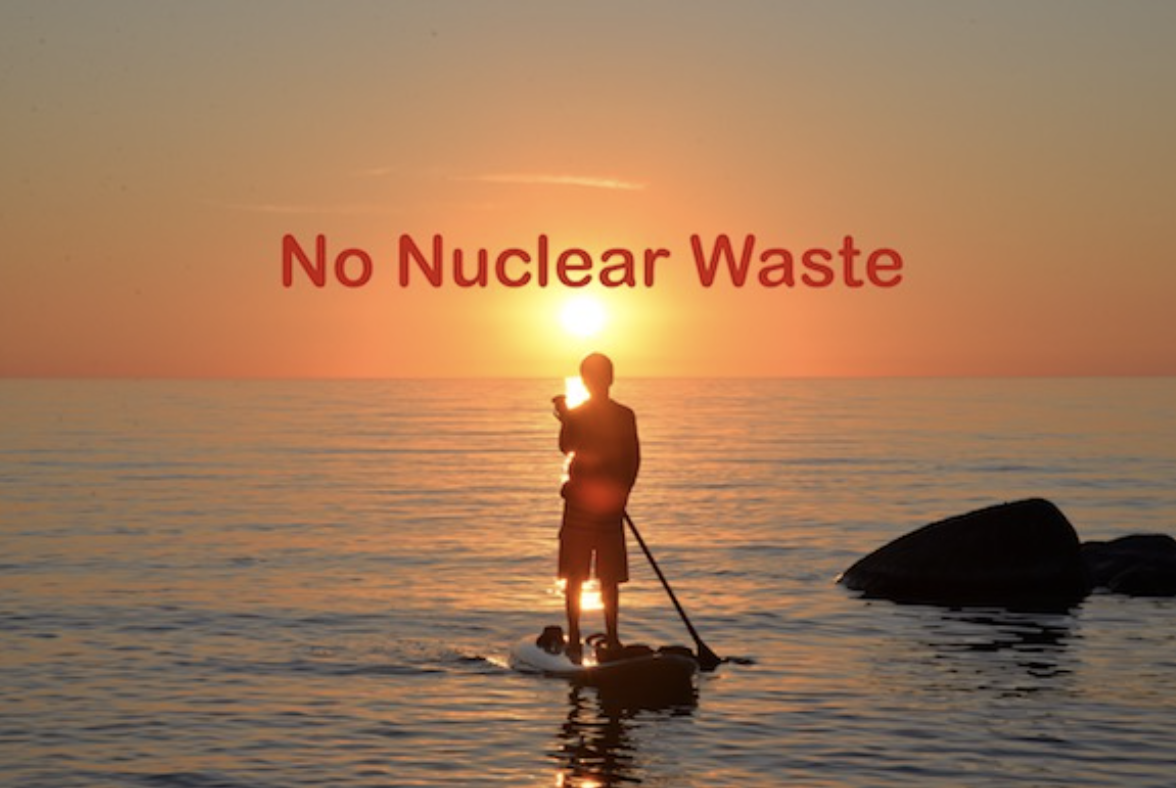McKenna Used to Say Evidence-Based Science was the Best Protection for the Natural Environment. Why Would She Accept so Much Less Now?
July 20, 2017. This is the fourth in a series of Blogs by Rod McLeod, retired lawyer, former Ontario Deputy Minister, Environment (with the Liberals) and earlier, Public Safety (with the Conservatives) after a time as Chief Crown Prosecutor and, latterly, 25 years of environmental law practice and currently a Board member of SOS GREAT LAKES.
Background: Premier Wynne’s Government owns Ontario Power Generation Inc. (OPG). Kathleen Wynne, as head of the Government, has allowed OPG to continue to plan to build a nuclear waste dump on the shore of Lake Huron, the central of the five Great Lakes that provide drinking water to 40 million people in Canada and the U.S. This Deep Geologic Repository (DGR) would hold 400,000 cubic metres of Intermediate and Low Level Waste (I&LLW). ILW can include reactor parts and other decommissioning waste that will remain dangerously radioactive for hundreds of thousands of years. When this material leaks, as every other Deep Geologic Repository (DGR) in the world has, the rogue emissions will enter the Great Lakes, potentially causing unimaginable damage to the largest fresh water supply in the world.
McKenna’s Dilemma: allowing this dump on the shore of Lake Huron is a dangerous and unnecessary gamble with our drinking water and would be in stark contrast to many very important environmental protection principles and initiatives, on which the Trudeau Government was elected in 2015. At the same time, she may be reluctant to be seen to be opposing the ever-popular vote-getting ‘’green” nuclear energy industry led by OPG.
Please click here for Blog 1where I tell you a little about SOS GREAT LAKES and explain the significance of an April 2017 Report from her Expert Panel (EP). The EP proposes major changes in Canadian Environmental Assessment to restore faith in EA with new fairer processes. It can and should help her with her upcoming decision to reject or accept the conditional first step approval for OPG’s plan granted by the Harper-appointed Joint Review Panel (JRP) at Kincardine. (Her decision is currently scheduled for fall 2017.)
In Blog 1, I stated my thesis: the Minister’s independent EP’s April 2017 Report provides her at least two ways out of this dilemma. Both require courage but with the help of her EP she may even be able to escape while continuing full support of nuclear energy, at least its green production cycle.
Her first way out is the totality of the major errors and legal breaches described in Blogs 2 to 7.
Today, I look at the risk to the natural and human environment from the failure of OPG, and all the Regulators on the Kincardine DGR, to follow established scientific protocol to obtain evidence-based science on the geology and proposed methodology.
In the 80s and 90s Canada’s plan for nuclear waste was science-based R and D. It was focused on burial in granite rock in the Canadian Shield in Northern Ontario or possibly Manitoba, away from the population. It confirmed that granite could be considered as viable host rock for the burial of waste. In the early 2000s, OPG, owner of most of the nuclear waste, looked to Southern Ontario close to the Bruce Nuclear Plant as a nicer, more convenient alternate site. This raised the eyebrows of some scientists and concerned citizens, but for some unknown reason, it apparently did not concern the Regulators who were charged with science-based decision making and public safety.
The Regulators framed the JRP’s Terms of Reference (TOR) in such a way as to:
Permit OPG to by-pass an international protocol for construction of DGRs, to which Canada was a party. This protocol required, as a mandatory first step for any DGR proposal, the construction and use of an Underground Research Laboratory (URL) to seek and obtain evidence-based science of the geology and proposed methodology. The federal government had started the process under this protocol in granitic rock in Pinewa, Manitoba, but by-passed this step at the Kincardine site in sedimentary rock, 900 meters from the Great Lakes.
This effectively saddled the JRP and public with unsubstantiated ‘science’ which they were compelled to use to evaluate whether the DGR in Kincardine was feasible from a construction and geological standpoint.
Underground Research Laboratory (URL)
The concept of a DGR from a technical and scientific viewpoint is predicated upon the understanding of how the host rock will perform to contain and isolate radioactive waste from human life and biota for very long time frames. The DGR project and the level of certainty that it must demonstrate in every aspect of its design, construction, emplacement, decommissioning and monitoring is absolute: nothing can be done by our actions that would put at risk future generations of people that we would not accept being done to us, to our children or to the environment in our times. The baseline for demonstrating this is the rigorous application of the scientific process.
This process involves, at its most fundamental level, systematic observation, measurement, experiment and the formulation, testing, and modification of hypotheses. Key to the demonstration of proof for the DGR project is the URL and the active and open exchange of knowledge gained from research and development.
Today, 15 countries are actively participating in the scientific and international effort to locate DGR facilities in suitable rock by studying 31 sites. It is difficult, exacting work; every facility must undertake the URL process and all have committed themselves to this universal standard.
With the standard URL process, the first step by a proponent is the URL, long before it looks for a willing host or takes any other step. Here, OPG seized the opportunity of the friendly local Mayor and lax Federal regulators to by-pass the URL and move directly to acquire adjacent municipal support through the cash for support hosting agreement.
If OPG had followed the standard URL process, they could have used the willingness of the local Kincardine politicians to use the very same site to do the URL before any other step. If the URL confirmed the geological/scientific advisability of OPG's plan they could have got on with the plan and prepared and filed their EA. If it did not, the issue would have been moot.
Situated next to the largest source of fresh water in the world, in untested sedimentary limestone, on the site of the largest nuclear power facility in the world, and in a populated, rapidly evolving and ecologically sensitive environment, a DGR at Kincardine is a startling choice to proceed in the absence of the research and scientific testing a URL would have provided. This proposed DGR on the shore of Lake Huron is the only known exception, worldwide.
The absence of this knowledge base from a URL scientific verification destabilized the entire site selection and EA process. Detailed, comprehensive, science-based, verifiable understanding of the viability of the geology, the construction, operation and decommissioning for DGR storage in the host rock is fundamental. All of this was essential to determine the safety case for the project, the effect on the environment, and cost benefit relative to other options. If not addressed, the failure to do so has the effect of devaluing and transferring unresolved issues and factors into the privatized commercially driven process of phased construction, implementation and decommissioning.
The TOR made no mention of the URL process. In the result, the OPG Environmental Impact Statement (EIS) was deficient from its start. Instead of accepting that deficiency as it did, the JRP should have declined to recommend that the DGR proceed until it was rectified. The absence of a URL phase from the verification process affected the content, methodology, and quality of the subject matter concerning every aspect of the OPG DGR project.
This error was particularly significant in light of Kincardine being the first location worldwide for an attempt at a DGR in sedimentary rock.
In January 2016, in Bure, France, a tunnel in a URL in sedimentary rock, collapsed, killing a worker and injuring others.
The ‘Science’ of OPG, Environment Canada, CNSC and the JRP.
In public documents and statements, OPG has claimed their site selection was based on “science, only science”.
On the Canadian CTV National TV program hosted by Lloyd Robertson April 1, 2017, a senior OPG official held up shiny cylinders of limestone (sedimentary rock) for a close look by the camera and described how, with 8 boreholes, the whole DGR construction, operation, and use could be predicted. He stressed how “hard” it was.
Beyond these borehole results, some not going to the full depth of the 680 meters where the waste would be stored, their ‘science’ was largely computer modeling. For anything that they found uncertain or speculative, they applied a construction methodology called, “adaptive phase management” (another name for improper delegating “go/no go” decisions to others including the proponent and its friendly regulator, CNSC).
In any event, the ‘scientific case’ was a long way short of being evidence-based or scientific.
The Minister’s first route to avoid turning this dilemma into a disaster is to look at the totality of the major errors and legal breaches in Blogs 2 to 7. When she does she will see a picture that is wildly out of sync with her Government’s 2015 Election platforms and her recent EP report. Rejection of the Kincardine JRP Report should be an obvious decision.
Rod McLeod, Director, SOS GREAT LAKES
PS We have now seen major errors and legal breaches in three subject areas: Blog 2 Community Acceptance and Blog 3 International Obligations and Blog 4 Abandoning Science. The reader may find the JRP’s decision suspect based on even any one of these but I am asking the Minister to look at the totality of errors including those in Blogs 5, 6 and 7, coming to you soon.

